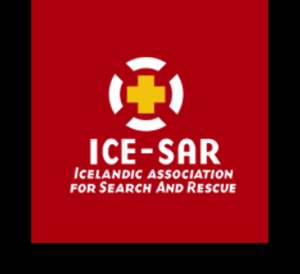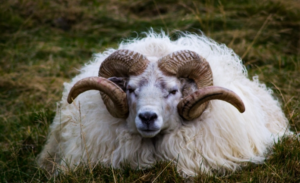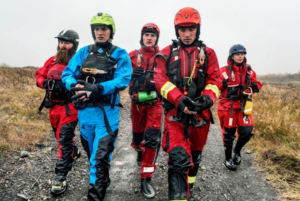Search and Rescue Teams in Iceland – Local heroes
In the absence of a national army or a government force to help in the case of emergencies, Iceland relies on volunteer search and rescue units. It is outstanding that these are manned by volunteers and financed by voluntary donations from Icelanders ????
ICE-SAR has 99 rescue units, located throughout Iceland. Th ey comprise over 3,000 volunteers who are always on standby 24/7 for emergencies. The units are manned by volunteers from all walks of life: taxi-drivers, carpenters or university professors. What these people have in common is that they wish to help their community and are willing to venture out in any kind of weather to rescue people in distress: “You have to be a little bit crazy, but in a good way,” one ICE-SAR member commented during a news interview!
ey comprise over 3,000 volunteers who are always on standby 24/7 for emergencies. The units are manned by volunteers from all walks of life: taxi-drivers, carpenters or university professors. What these people have in common is that they wish to help their community and are willing to venture out in any kind of weather to rescue people in distress: “You have to be a little bit crazy, but in a good way,” one ICE-SAR member commented during a news interview!
The rescue teams are specialized in search and rescue both on land and at sea. To be able to address the diverse tasks, the rescue teams are well educated in their fields and thoroughly trained. They strive to outfit their people to the highest standard, with both personal gear and expensive rescue equipment like cars, snowmobiles and boats. In recent years, specialization within rescue teams has increased, making the work more purposeful: land groups, sea groups, diving groups, advance groups, high-angle rescue groups, and search dog groups.
History:
Slysavarnafélagið Landsbjörg has roots going back to 1918 with the formation of a rescue team organized by women in the Westman Islands who sought to establish a lifeline for husbands working in the dangerous fishing industry. Search and rescue teams did not become widespread, however, until after a plane crash near Geysir in September 1950. Most of those on board managed to survive but were stranded in the wilderness. After a failed rescue attempt by American military forces, a civilian force formed to organize a rescue on foot and ski. The drama of the event helped start a network of local rescue teams that sought to help in cases of similar emergencies
Fundraising:
There is an annual 3 day fundraiser that is run every Nov for the Icelandic Association for Search and Rescue, called Neyðarkall.
It involves the sale of a keychain in the shape of a rescue worker which is different every year– In 2019 – a female, holding a drone. The name of the fundraiser is a clever one, for the word neyðarkall has two meanings: emergency worker and emergency call.
Over the 3 days, rescue workers sell the Neyðarkall at numerous busy locations all over the country
In 2019, the focus was on drones, for they have proven very helpful in search efforts. More and more rescue teams have taken them into use, and many teams have groups of volunteers specialized in using drones when searching for people.
Profits from the sale of the Neyðarkall go directly to rescue teams, to be used to improve the equipment and the training of the country’s rescue workers. The operation of rescue teams is costly, although all rescue workers are volunteers.
You may have heard of the legendary display of fireworks here in Reykjavík City on New Year’s Eve, where around 500 tons of fireworks are unleashed right across the capital area. You might also have heard of Iceland’s exceptional search and rescue team ICE-SAR, whose rescue efforts save countless people each year who’ve become dangerously lost in Iceland. What you might not have heard about is the fact that the sale of fireworks for this event is critical for funding this wonderful organisation, and for the training and equipment needed for their numerous search and rescue missions.
Reykjavík City on New Year’s Eve, where around 500 tons of fireworks are unleashed right across the capital area. You might also have heard of Iceland’s exceptional search and rescue team ICE-SAR, whose rescue efforts save countless people each year who’ve become dangerously lost in Iceland. What you might not have heard about is the fact that the sale of fireworks for this event is critical for funding this wonderful organisation, and for the training and equipment needed for their numerous search and rescue missions.
For most of the year the sale of fireworks in Iceland is prohibited; they can only be purchased from 28th December to the day of the Elf Bonfires on January 6th.
In 2018 it was noted that there had been increasing concern over the pollution caused by the annual fireworks extravaganza in Iceland, and the resulting difficulties experienced, for instance, by people with respiratory problems. As such, the idea of selling seedlings to be planted in a grove outside Þorlákshöfn had suggested and had been “well-received” by locals.
News Reports:
All the teams aid locals as well as tourists through out the year, along with searious rescues there have been a few humerous stories.
Aug 2012 : Independent Newspaper /UK
Missing’ Icelandic tourist goes in search of herself!
A woman on a visit to Iceland has managed to add new twist to the concept of “self-discovery” after taking part in a major mountain search operation for a lost tourist before admitting to police that she was the missing person everyone was looking for.
The bizarre mix up occurred last Saturday in Iceland’s southern volcanic region near the island’s Eidgja canyon, a remote but popular walking area for visiting tourists.
The woman in question was reported to have failed to return to her tour bus.
The tour company driver waited for an hour. When the woman failed to turn up, he alerted police and search teams were dispatched to the area shortly afterwards. They started combing the barren treeless hillsides looking for an Asian woman described as 5ft 2in and wearing dark clothing.
The expedition was only called off at 3am after it emerged that the woman had been on the bus all along and had even participated in the search, having had no idea that she had been reported missing.
Before getting back on the bus, the “missing” tourist had apparently changed her clothes and “freshened up”.
Her fellow passengers and the driver did not recognise her as being the same woman.
The penny only dropped when the search was well underway. She immediately told the bus driver, who informed the police. A happy ending to an otherwise stressful situation ! ????
July 2018 : Iceland Magazine
Search for polar bear in North Iceland called off: could have been “the scariest sheep ever”
Police in North East Iceland and the Icelandic Coast Guard have called off the search for a polar bear on Melrakkaslétta peninsula in N.E. Iceland after an extensive search from land and air. The search was launched after foreign travelers who were trout finishing reported they had spotted a polar bear. The men were unable to photograph the animal, as they were too startled and scared to pause and search for a camera. Nobody else has seen the animal.
The search for the suspected polar bear was called off at 16:30 after an extensive search from land and air. Police in NE Iceland stress that they do take the report seriously and urge people in the area to be on their toes and to report any polar bear sightings immediately.
Spotted something “very big”
The three men, French travelers who were angling for trout in Hraunhafnará river on the northern tip of Melrakkaslétta, had parked their car by the farm Skinnalón and walked some four kilometers (2.5 mi) to the river. David Zehla, the men’s guide told the National Broadcasting Service RÚV one of the men suddenly shouts “There is a polar bear in front of us!” Zehla told RÚV that he didn’t see the animal clearly himself, as he normally wears glasses but had taken them off. However, he did see something “very big”. The other man had panicked and ran off.
Rather than stay and investigate Zehla and the third man run after the man who had initially seen the polar bear. After running a few minutes the men stopped to catch their breath, and Zehla tried to get a grip on the situation.
“Our buddy was 100% sure he had seen a bear and that it was a polar bear. Of course we decided to err on the side of caution, so we hurried back to the car and returned to safety.”
When safe the men talked to locals who told them that polar bears have been spotted in the region in the past. Zehla told RÚV that they then decided to contact police and report the sighting. “I gave them all the information we had and they set off to search for the bear.
A very big and super scary sheep
Zehla also posted a statement on his Facebook page to clarify the news of the bear sighting . He admits that he can’t be sure if he actually saw a bear, saying it could also have been a very larg and terrifyingly scary sheep:
“When we go fishing in Melrakkaslétta, south of Hraunhafnará, and one of us shouts there is a polar bear, 60 – 70 meters from us, no time to double check if it was a sheep or a bear but I saw something pretty big and unusually white…my fishing budy was 100 % sure it was a bear. Panic, we ran for our lives. 4 km from the jeep, in a ruff terrain, moors, high grass, streams. We dropped the trouts we fished on the way . Luckily the wind was coming from the south and we were heading north so no smell of our fear for the bear. We are still not sure if there is a bear or not in the area. If not, we might have encountered the scariest sheep ever and all the fishermen will make fun of us. We’ll see.”
Halla Bergþóra Björnsdóttir, the chief of police in North East Iceland told the local news site Vísir that the search had not turned up anything to suggest a polar bear, but did not rule out the possibility that the bear had swum back out to sea. “They were very sure they saw a polar bear,” she told Vísir, “They didn’t see any other sheep in the area. Usually sheep travel in small groups of several animals, which led the men to assume they hadn’t seen a sheep. But the animal was at some distance, making it difficult for them to say with certainty what they actually saw.”
Polar bears are not native to Iceland, but have on rare occasions come ashore after traveling across the ocean on ice floats. Sheep, however, are very common anywhere outside urban areas, as Iceland is one of very few countries in the world with more sheep than people. Unlike polar bears, who are carnivorous, sheep live on a plant-based diet. Another important difference between polar bears and sheep is that while polar bears are extremely dangerous sheep are totally harmless to humans. At least under all normal circumstances: Wandering sheep can pose a serious hazard to drivers.
Snap decisions can be extremely costly
We at Iceland Magazine hope David’s friends and colleagues don’t give him and his fishing buddies too much of a hard time: Polar bears are terrifying animals, and they can come ashore in North Iceland when drift ice comes close to shore – which is usually in late June, early July. Usually it is better to err on the side of caution. But we would also like to urge people to stay calm when confronted with danger or a problem while traveling in Iceland
You are more likely to make sound decisions if you take a moment to evaluate the situation and your options. This applies to polar bear sightings as well as river crossing. Excessive haste and snap decisions can end up being extremely costly, and even dangerous both to you personally, but also to others.
A POLAR BEAR OR A SCARY SHEEP? The French anglers were startled by a very large, and scary looking sheep.

